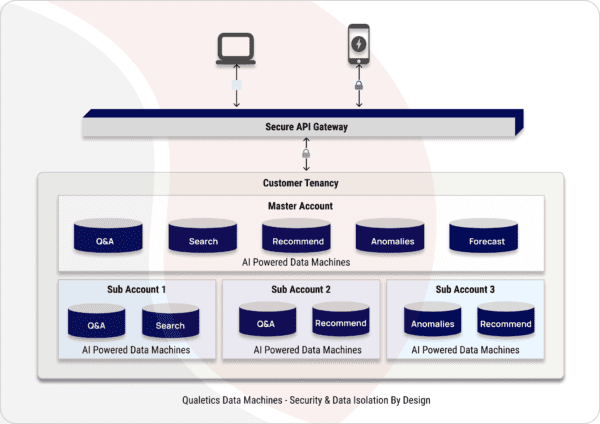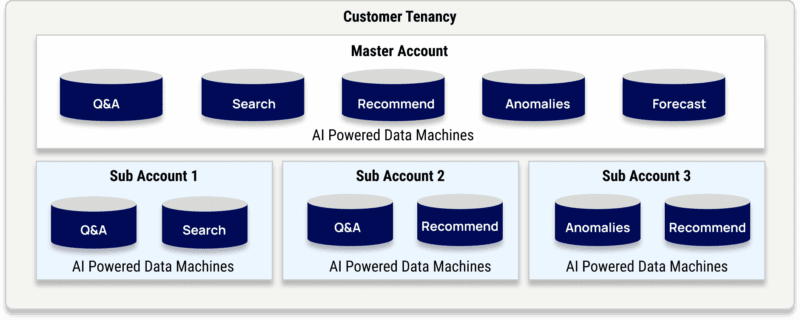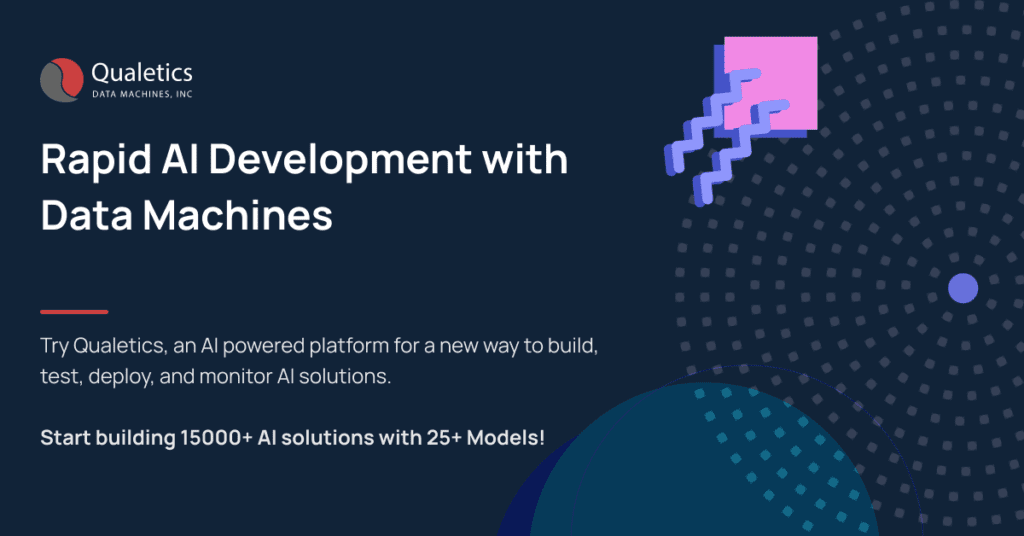How to build Secure AI applications?
So far we have discussed building powerful, self-learning, stateful Data Machines that have different options for interoperability for various business domains. But none of these capabilities would hold any merit unless they are protected by a secure layer and that’s what this article will cover – Security.
The Plug and Play AI implementation offered by Data Machines is secure by design. While there are several ways security is offered by SaaS applications, we will focus on two areas of security in this article – Physical and Logical security.

Physical Security
Physical security practices of Data Machines implement the following measures –
Data Transmission – Data Machines are designed to be embedded in other apps which interact with Data Machines through API for pushing requests or Web sockets to pull information and insights from Qualetics. The transmission of data in these requests are handled through secure communication and encrypted through the TLS protocol.
Storage – As with any modern SaaS application, storage of information should be handled with the highest sense of security which can be achieved through firewalls and encryption. Qualetics implements this as a standard measure for the infrastructure that supports Data Machines, by encrypting the data at rest in addition to the data transmitted.
Physically Isolated Multi-Tenancy – Qualetics is a B2B platform designed to help businesses in Scaling AI securely and to support that every client of Qualetics will have a dedicated storage space allocated for all their data. Unlike other SaaS solutions, multi-tenancy with Qualetics is implemented using physically isolated instances.
Analysis – Due to the design of the tenants being isolated physically, the data analysis, insight generation, executing AI inferences is isolated for each client extending the benefits of physical data isolation.
Logical Security
Logical Security practices of Data Machines and the Qualetics platform contain the following capabilities –
Sub-Accounts – Multi-tenancy in Qualetics can be extended to our clients as well where they can support multiple clients they serve. Within Qualetics, our clients can create Applications and Client Instances that allow them to support multiple applications for multiple customers. In addition to that, Data Machines created can be designed to operate independently for the different customers.
This form of multi-tenancy can enable a customer to create a Data Machine with a Self Learning Q&A model to learn different sub-clients and support them individually. For example, a Qualetics customer can build a Q&A Data Machine to support their Retail Sub Account 1’s website and also support their Retail Sub Account 2’s website.

Sub Account 1 and Sub Account 2’s generated embeddings reside in their dedicated physical storage which allow them to be able to support their own users individually.
Access permissions, Collaboration Features and API Security – These are standard SaaS features that are also supported by Qualetics to enable a secure and collaborative workspace for any business’s users and also provide a safe way to integrate with other applications. The details of these features and others are explained in detail in our product documentation.
Sign Up For a Free Trial
To learn more about Data Machines and get started with building your own AI solutions, sign up for a Free trial and start building today.
Sign Up As a Partner
If you’re a Software Development firm looking to rapidly build AI solutions for your customers, Data Machines offer you the best possibilities. Reach out to us here.

